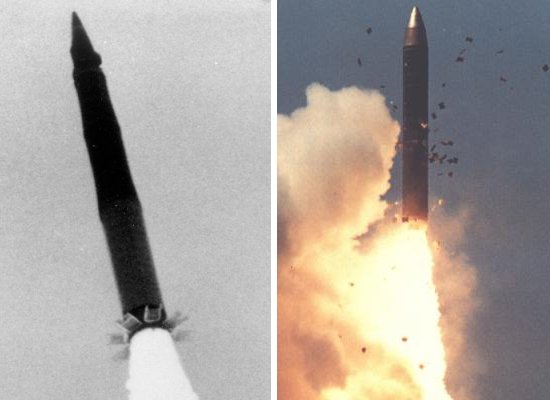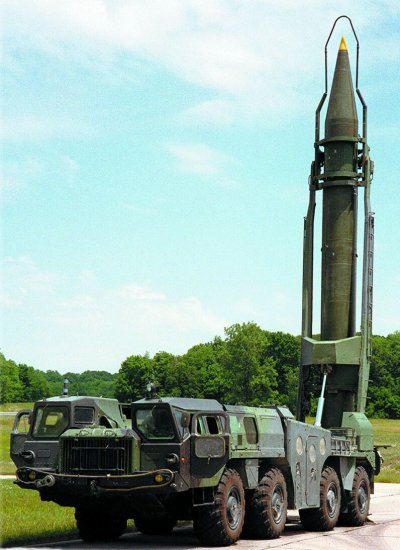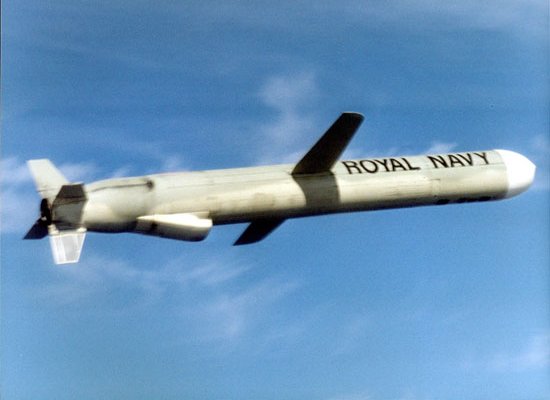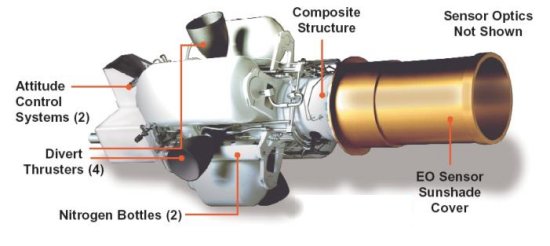|
||||||||||
|
|
||||||||||
|
||||||||||
|
|
||||||||||
Probably the broadest of these distinctions is strategic versus tactical weapons. In general terms, a strategic weapon is one designed for mass destruction like a nuclear missile. A tactical weapon, on the other hand, typically carries a conventional high explosive warhead.
These definitions are not always clear-cut, however, for there can be considerable overlap between how the terms strategic and tactical are applied depending on the context. For example, nuclear weapons are often classified as both strategic and tactical. A strategic nuclear weapon is usually considered to be a large vehicle like an intercontinental ballistic missile (ICBM) that can travel over very long ranges and carries a very large and powerful high-yield warhead. A tactical nuclear weapon is generally much smaller like a cruise missile or a bomb that travels over short ranges carrying a low-yield warhead. A strategic weapon would typically be targeted at a military base or city according to a premeditated war plan. A tactical weapon, however, would usually be used against battlefield targets that may change rapidly as battle conditions change.

Most of the missiles that we tend to think of as strategic weapons are ballistic missiles like the SS-25 and Peacekeeper missiles pictured above. However, ballistic missiles are not necessarily strategic weapons. The two examples mentioned above are both designed to travel halfway around the world carrying large nuclear warheads, but other ballistic missiles are tactical weapons designed for shorter ranges carrying smaller conventional warheads. Perhaps the best-known example of a tactical ballistic missile today is the SCUD missile used by Iraq during its war against Iran and also launched against Saudi Arabia and Israel during Operation Desert Storm in 1991.

In either case, the reason this class of missiles is called ballistic is that the weapon spends much of its flight in an unpowered free-fall towards the target. While the weapon is a guided missile with a propulsion system during launch, this booster burns out during flight. The purpose of the booster, usually a solid or liquid rocket, is to push the warhead out of the atmosphere and into space. The warhead then follows an unguided suborbital trajectory. Under the influence of gravity, the warhead falls back into the atmosphere and takes a ballistic re-entry path to reach its target.
This type of flight path is significantly different from that followed by a cruise missile. While a ballistic missile leaves the atmosphere, a cruise missile remains within the atmosphere throughout its flight. In fact, this type of missile relies on the atmosphere for flight because it deploys wings to generate lift like an airplane. While a ballistic missile relies primarily on thrust and gravity to dictate its trajectory, the ability of a cruise missile to generate lift allows the vehicle to vary its flight path and approach a target from different directions. A cruise missile also typically remains powered and guided throughout is flight from launch to impact against the target. The most well known cruise missile today is probably the Tomahawk used extensively by the US during conflicts in Iraq, Kosovo, and Afghanistan.

Both ballistic and cruise missiles can be armed with a nuclear warhead, so both could be considered strategic weapons. However, cruise missiles are typically much smaller than their ballistic relatives with a correspondingly smaller payload and range. As a result, cruise missiles are usually classified as tactical weapons.
An anti-missile missile is exactly what it sounds like--a missile designed to destroy another missile. Anti-missile missiles may be designed to shoot down any kind of missile, but they are typically meant to engage ballistic missiles in particular. A missile designed to destroy a cruise missile, on the other hand, would probably be classified as an air-to-air or surface-to-air missile most of the time.
Ballistic missiles tend to be much harder to destroy, however, owing to their high speed and difficulty to track as they fall from space back to Earth. Both the US and Russia have invested significant research into this problem since the late 1960s. The American effort was derisively dubbed "Star Wars" during the 1980s but has recently become known as Ballistic Missile Defense (BMD). Among the systems being developed for BMD is the Raytheon Exoatmospheric Kill Vehicle (EKV) pictured below.

EKV is designed to be launched into space atop a booster to intercept an enemy missile in space during its ballistic phase. The US Navy has also developed a missile defense system based on the venerable Standard surface-to-air missile while the Army is working on the Theater High-Altitude Area Defense (THAAD) missile. Russia too has developed the S-400 surface-to-air missile system with an anti-ballistic missile capability. The Standard SM-2 Block IV, THAAD, and S-400 missiles would also intercept ballistic threats outside the atmosphere or at very high altitudes but are limited to defending a smaller area than a system like EKV.
In contrast to these anti-missile systems, another school of thought says that it is easier to detect and destroy a ballistic missile during its launch and boost phase. The missile is traveling much more slowly during this stage of flight than when it is in ballistic free-fall, making the weapon potentially more vulnerable to attack. A system being developed to exploit this vulnerability is the Airborne Laser built for the US Air Force. This system consists of a massive chemical laser carried aboard a modified Boeing 747 and designed to aim a high-energy beam at the outer casing of the missile's booster rocket. If successful, the beam would burn a hole through the rocket wall so that the highly pressurized gases within will escape and rip the vehicle apart.
Nonetheless, these high-tech anti-missile systems remain unproven and may be doomed by political pressures before they are successfully developed. Both ballistic and cruise missiles remain as attractive to militaries today as they were to the Germans who first developed these weapons during World War II.

Cruise missiles like the German V-1 "buzz bomb" are often an inexpensive and reliable means of attacking a heavily
defended target with great precision without risking the life of a pilot. Ballistic missiles like Germany's V-2
rocket may be more costly and difficult to deploy but are nearly impossible for an adversary to defend against.
For these reasons, it is likely that both types of missiles will continue to be proliferated by friend and foe
alike.
- answer by Jeff Scott, 10 April 2005
Related Topics:
Read More Articles:


|
Aircraft | Design | Ask Us | Shop | Search |

|
|
| About Us | Contact Us | Copyright © 1997-2023 | |||
|
|
|||